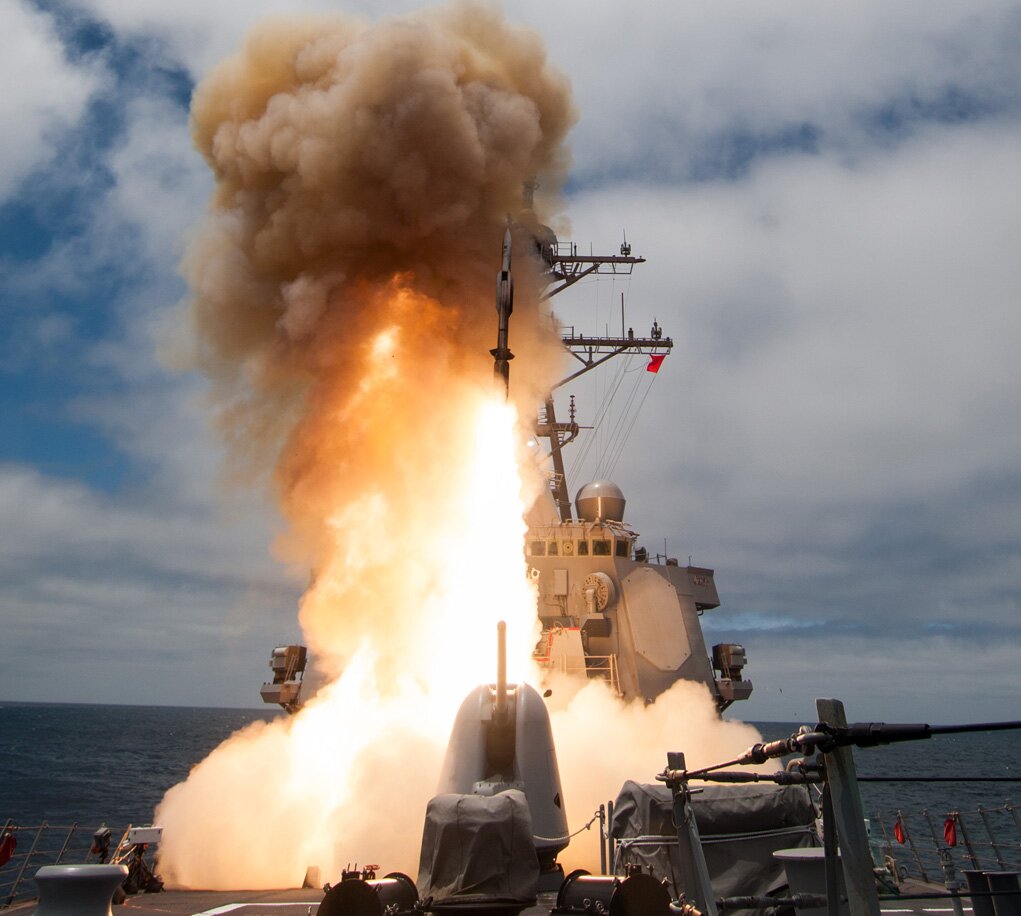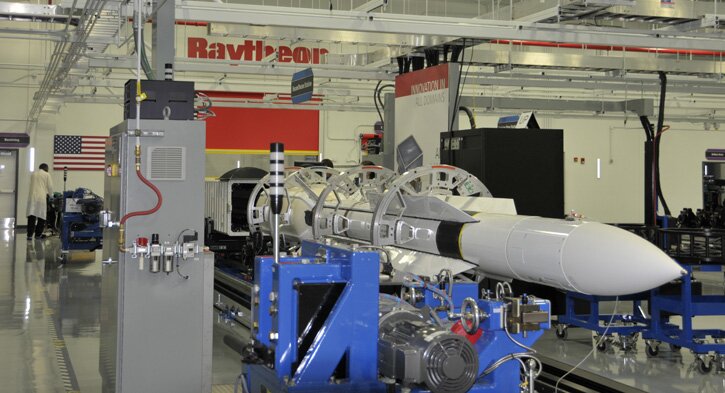 The Arleigh-Burke class guided-missile destroyer USS John Paul Jones (DDG 53) launches a Standard Missile-6 (SM-6) during a live-fire test of the ship’s aegis weapons system in 2014. Photo: US Navy
The Arleigh-Burke class guided-missile destroyer USS John Paul Jones (DDG 53) launches a Standard Missile-6 (SM-6) during a live-fire test of the ship’s aegis weapons system in 2014. Photo: US Navy
The Standard Missile-6 (SM-6) continues to demonstrate its prowess in operational tests – in a challenging multi-threat intercept test SM-6 missiles successfully engaged five targets, struck a surface target and shattered its previous maximum engagement range record, set in June of 2014. In recent testing SM-6 has shown expanded mission capability in three key areas: Anti-Air Warfare, Sea-Based Terminal and Anti-Surface Warfare.
The test series supported by the Cooperative Engagement Capability (CEC), validated the tactical warfighting capability of SM-6, by demonstrating both maximum down range and a maximum cross range intercepts in over-the-horizon, engage-on-remote missions. The Arleigh-Burke class guided-missile destroyer USS JOHN PAUL JONES (DDG 53), configured with AEGIS Baseline 9.C1, executed the series of four missions with five SM-6 missiles for Follow-on Operational Test and Evaluation (FOT&E), part of the final testing leading to a likely declaration of Full Operational Capability in 2017.
The Arleigh-Burke class destroyer USS GRIDLEY (DDG 101) was on station to perform as the AEGIS assist ship for the engage-on-remote missions. The tests also proved the ability of SM-6 to conduct complex, multiple target scenarios. In prior tests JOHN PAUL JONES also tested the SM-6 Dual-I missiles, fitted with a software update that lets the missile identify, track and kill ballistic missile warheads.
This is an excerpt of the 550 word article available to defense-Update subscribers
 A Standard Missile-6 is loaded into a specialized container at the Raytheon Redstone Missile Integration Facility for delivery to the U.S. Navy. The all-up-round production facility at Redstone Arsenal in Huntsville, Ala. is where final assembly of SM-3 and SM-6 takes place. Photo: Raytheon
A Standard Missile-6 is loaded into a specialized container at the Raytheon Redstone Missile Integration Facility for delivery to the U.S. Navy. The all-up-round production facility at Redstone Arsenal in Huntsville, Ala. is where final assembly of SM-3 and SM-6 takes place. Photo: Raytheon
SM-6 and SM-3




